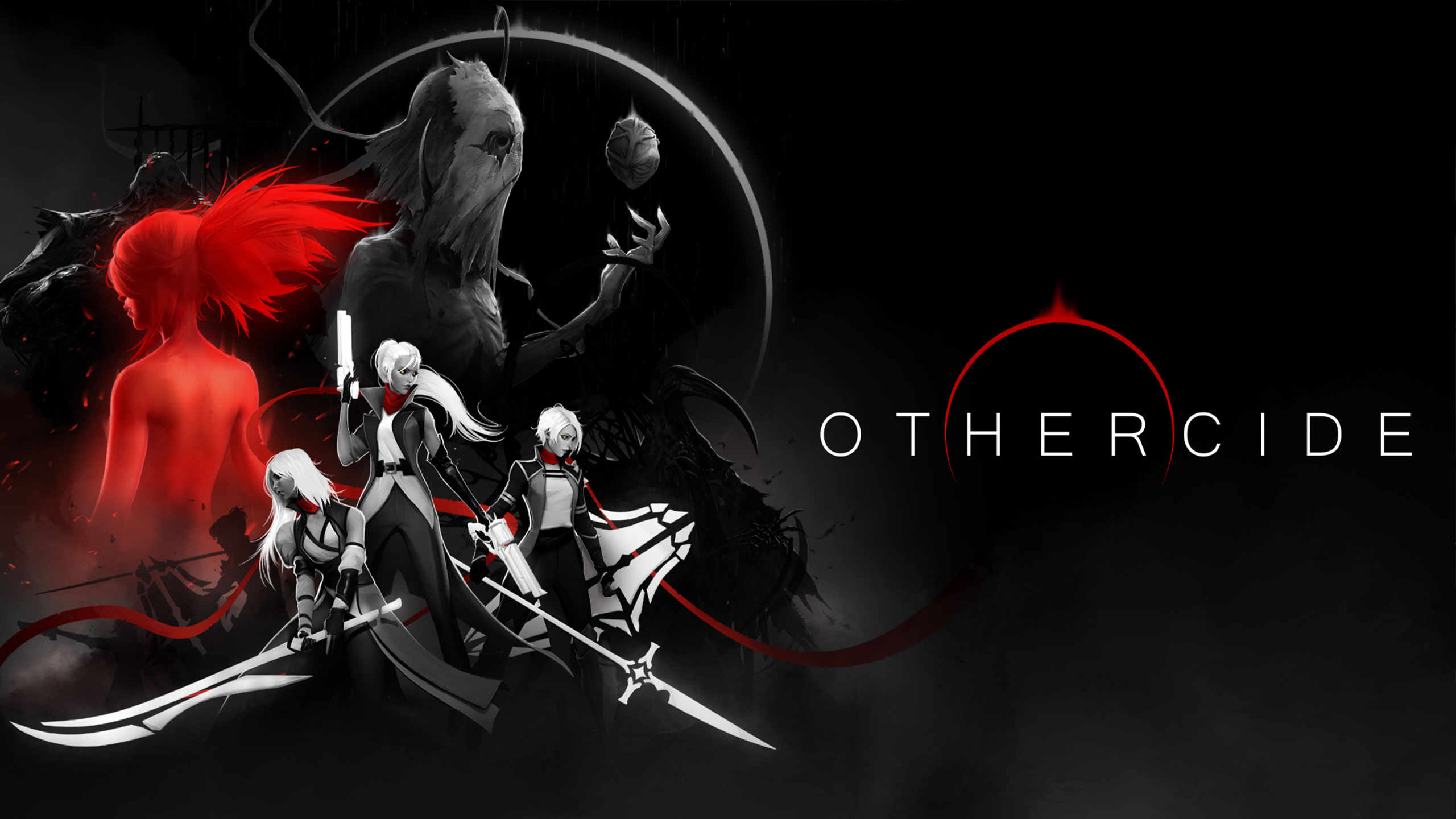Resurrect one fallen Daughter through the sacrifice of another. Strap in for a brutal battle where victories are difficult if not impossible to obtain. It is the Age of Shattering, and the Daughters are not exempt from being broken to the point of death.
“Are you going to repeat the same mistakes again and again?” This is a quote from one of the loading screens. After trying to learn the basics of Othercide, I could understand why a saying like this would be in the game.
Developed by the French-based indie company Lightbulb Crew and published by Focus Entertainment, Othercide is an indie, roguelite single-player game available on Xbox One, PlayStation 4, Nintendo Switch, and Windows-based PCs.
Othercide invites players to a beautiful yet grim world of red, black, and white minimalistic aesthetics. The gorgeous visuals with fashionably dressed warriors attracted me to check out the game. Unfortunately, it was not enough to keep me wanting to figure out how to master the game. The concepts are not fully fleshed out. Execution of good story ideas felt minimal.
But first, let’s look at the lore of Othercide, then my gameplay experience as well as my overall first impressions.
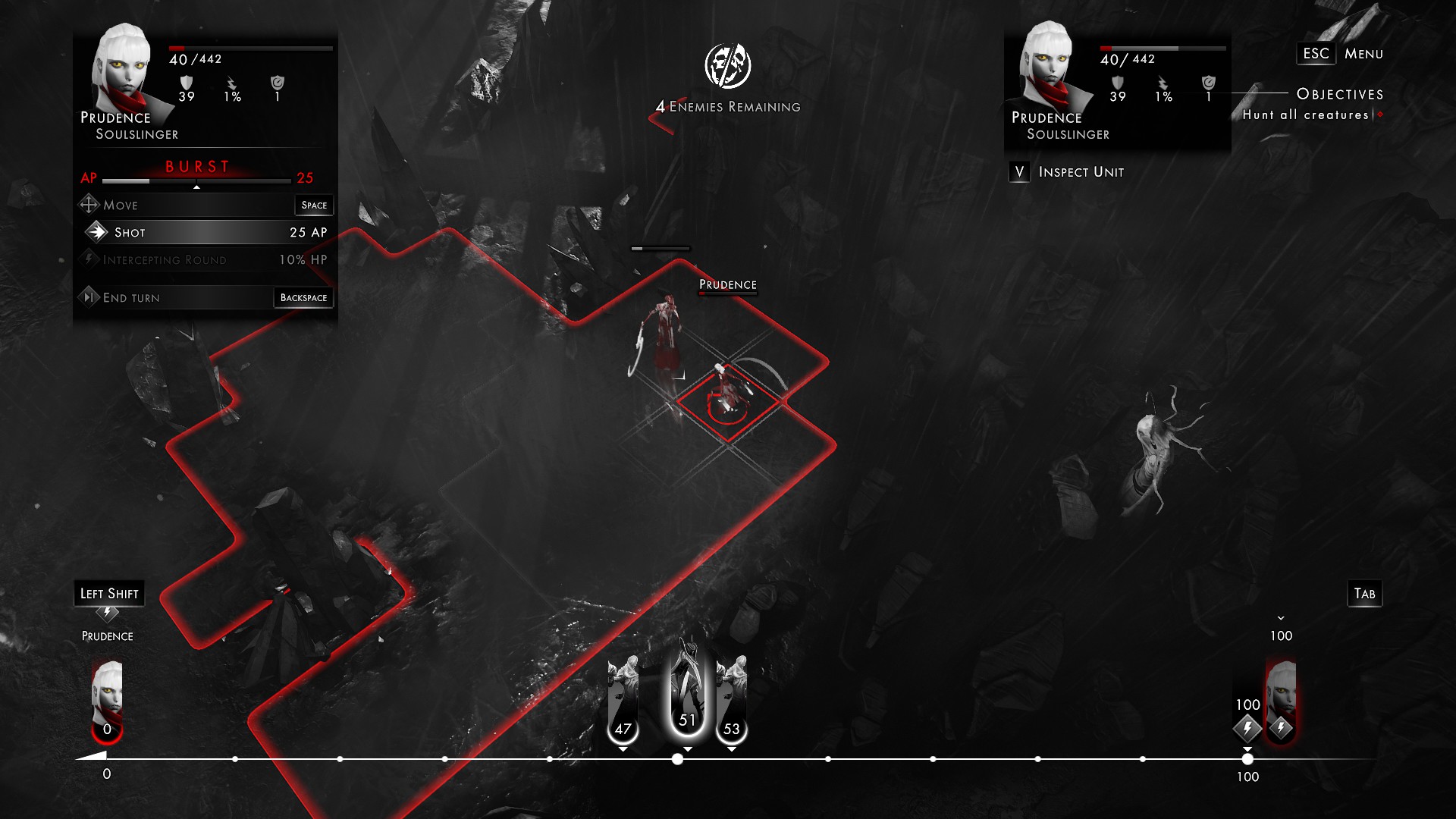
THE LORE BEHIND THE GAME
It’s 1897, the Age of Shattering. An infestation of evil has laid waste to the city, causing hideous creatures called Others to enter the now-dark world. This and other apocalyptic events destroy time and space, forming an intermediate location known as the Dark Corner. The Red Mother–a ghost-like being–commands an army of Daughters against these evils and the ultimate enemy Suffering.
With dovelike eyes, white hair, and stylish outfits, these Daughters represent purity in stark contrast to the grotesque figures they battle. Names like Harmony, Constance, and Peace further reinforce the good versus evil theme.
GAMEPLAY EXPERIENCE
The gameplay is turn-based and tactical, requiring a strategic mindset. For someone who regularly plays a variety of tabletop roleplay games, these are concepts I understand, so I looked forward to what I would experience.
Upon starting the game, players are offered two modes: Nightmare (original) or Dream (alternate). The latter claims to be less punishing. I tried both but did not see much of a difference.
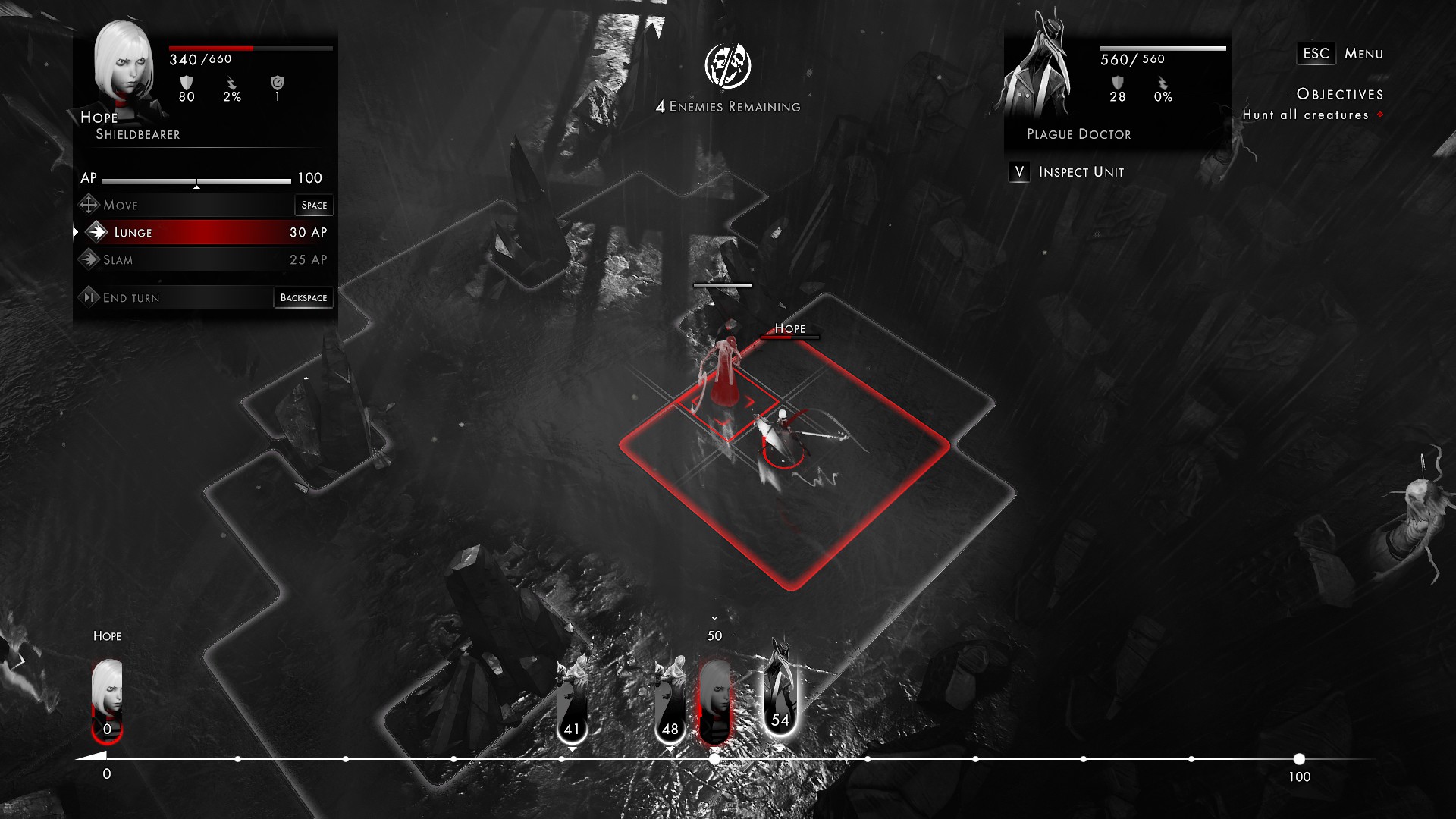
In either mode, player-characters start with a set value of Hit Points (HP), Action Points (AP), Armor, and Dodge. Move and Skills, as well as End Turn, are also represented in the Daughter’s stat block. The developers created a unique Dynamic Timeline System for Othercide, and this is displayed at the bottom of players’ screens during the battle scenes. Unfortunately, the UI doesn’t include a mini-map, so players can’t easily keep track of their Daughters or enemies.
Moving on the battlefield is pretty straightforward, and the Actions have explanations available should players ever want a refresher. Aside from direct attacks, there are also interruptions, reactions, and delayed actions. Interruptions block an enemy’s attack and can allow for a Daughter to counterattack. Reactions trigger an attack as long as conditions are met. Delayed actions occur after a certain number of turns take place. Actions can build off one another to create combos. When attempting these, I still found myself at the mercy of overpowered enemies.
When starting a new game, I immediately ran into problems when trying to play with a keyboard and mouse. Some of the controls refused to work, and I was never able to resolve the issue. This made for a poor first impression. However, playing with a controller proved to be no problem.
The game gave me a lot of short instructions, and at first, I really appreciated this. As time went on, though, the same dialogue boxes continually guided me, to the point of feeling micro-managed and claustrophobic. A more open-world game where more options are available would have been appreciated.
What felt like a tutorial battle when I launched the first new game led me to believe that I had a fair chance of winning. After this introductory fight, I lost every match. This initial battle also demonstrated a longer list of available Actions (which cost AP) that none of my Daughters had in future matches. This felt a bit misleading and fed into my overall disappointment with the game.
Battles are fought during missions, and these are known as Synapses. A new Synapse appears each day, assuming you have beaten the previously assigned one. The four missions are hunt (eliminate all enemies), ritual (eliminate a specific enemy), rescue (escort a unit to freedom), and survive (stay alive until you escape). Anticipate repeating the same mission on the same set of maps until you are victorious.
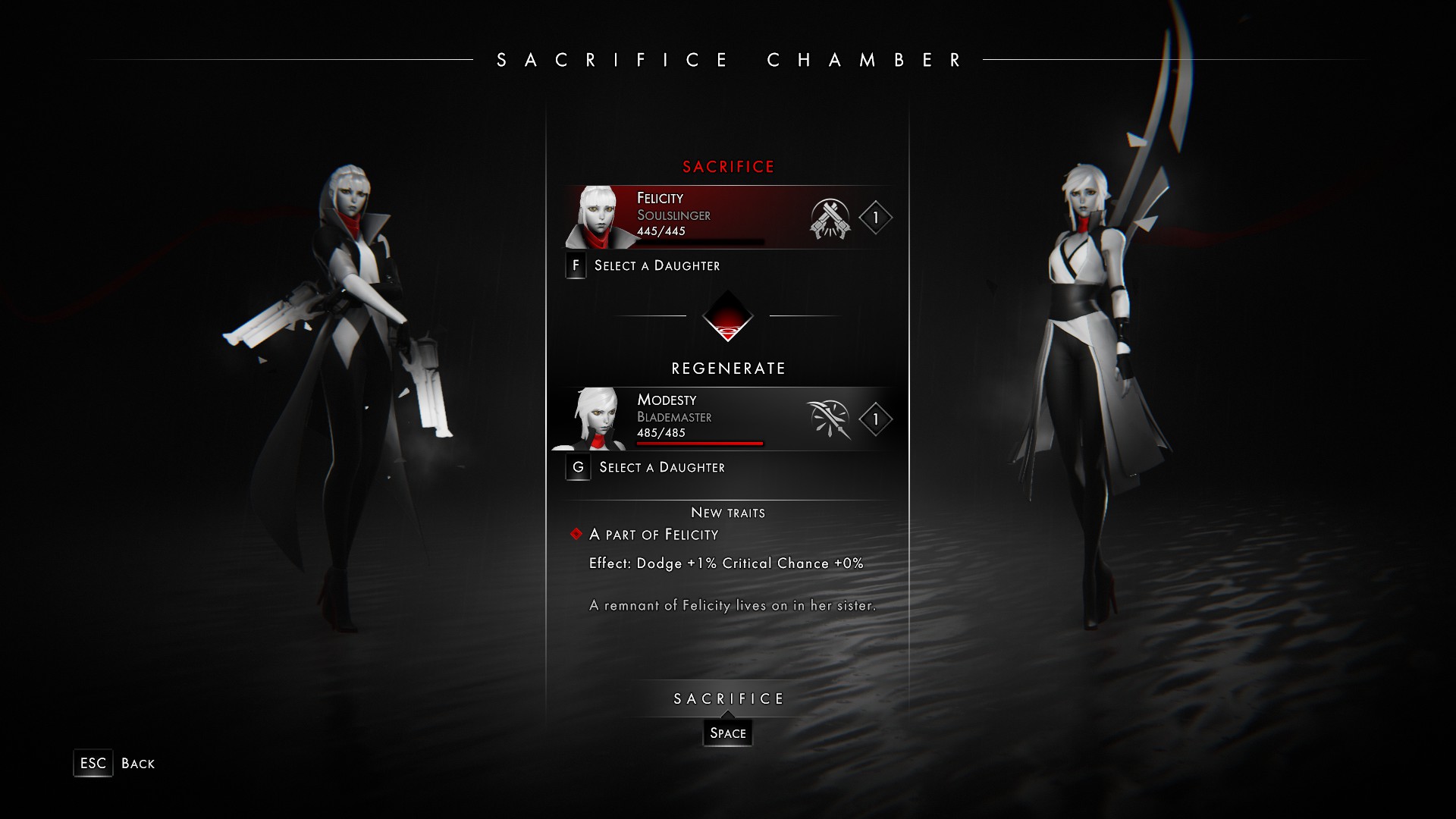
One interesting yet dismal mechanic is the Sacrifice mechanic. This allows players to build into future Daughters and make them stronger than previous warriors. It’s dismal in that it’s a rather slow process, so don’t expect anything note-worthy to carry over quickly when resurrecting or germinating a new Daughter.
Another mechanic called Remembrances (discussed a bit later) boosts future Daughters’ stats. It would have been enjoyable to unlock these, but the game requires far too much grind to easily obtain these. Well after an hour of gameplay, I finally unlocked one.
Lastly, there are Memories, and these are specific ability bonuses that provide your Daughters with buffs or somehow enhance their attacks. These are gained after successfully completing Synapses, and they don’t carry over like Remembrances.
Othercide attempts to help players improve and get stronger with each run by looping. Unfortunately, the gameplay becomes far too repetitive to enjoy. My one Daughter on the battlefield during any one Synapse could never successfully overcome the unbalanced odds against her, so there was never any significant progression like I had hoped to see.
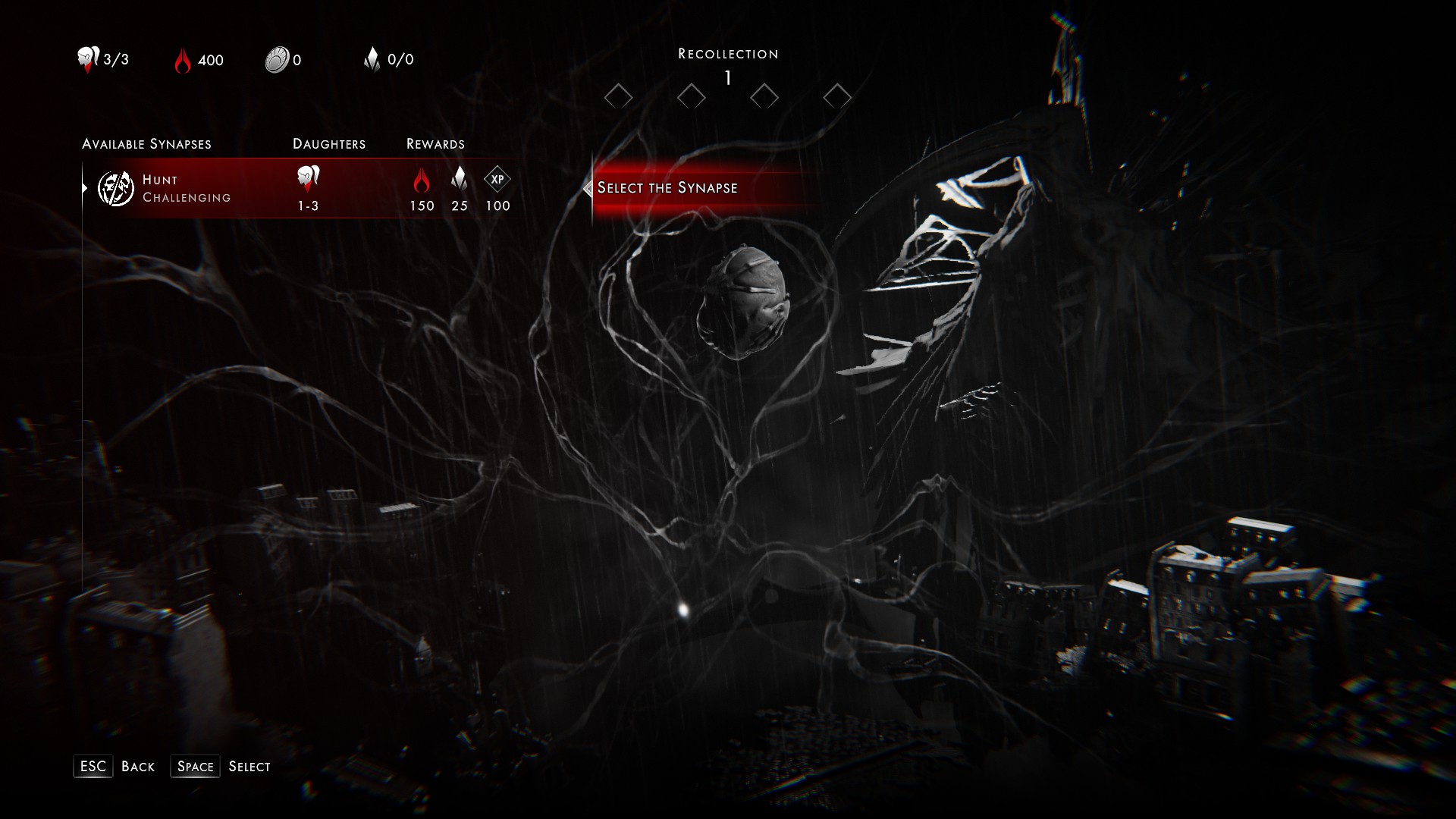
THE INNER VOID
The Inner Void is where players go in-game to manage their Daughters and prepare them for battle. The two primary ways to do this are by Resurrecting or Germinating. Resurrecting requires Resurrection Tokens, and these are gained via the successful completion of missions or unlocking specific Remembrances. Germinating takes place in the Sacrifice Chamber and costs 200 Vitae, and players start out with 600 of this in-game currency.
The class selection of warriors is small. Players choose from the Soulslinger (a ranged fighter who provides protection), the Shieldbearer (a heavy tank with ample armor ready to defend), and the Blademaster (a melee fighter with high damage but low defense). There’s also a secret class (the Scythedancer) that can be unlocked at a certain point further in the game.
The Inner Void also contains several other items of interest. First, there’s the Codex filled with details on the NPCs from both sides of the battle. Next is the Cemetery where deceased Daughters wait until players resurrect them. There’s also a section for Remembrances. These are perks that usually unlock upon eliminating enemies, allowing you to carry over Shards from your previous battle. Shards are yet another in-game currency players can spend to activate bonuses that increase health and damage or the option to skip previously defeated bosses.
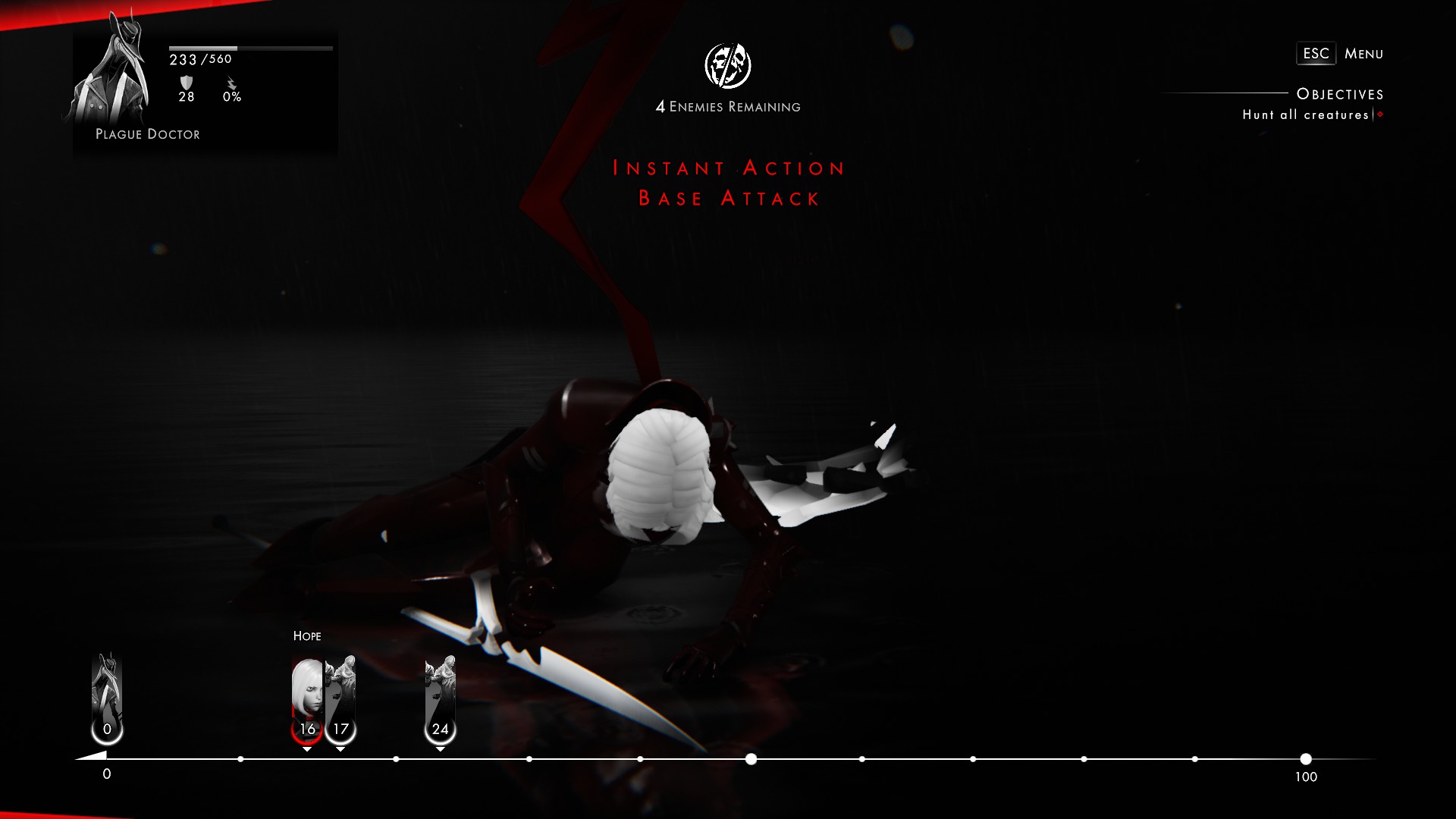
FOUR ALTERNATIVES TO OTHERCIDE
Instead of Othercide, players looking for a turn-based rogue-lite game may want to consider the following:
XCOM 2: Aliens rule Earth. Player-characters are part of a global resistance and face insurmountable odds trying to rebuild XCOM, the world’s last line of defense. Save humankind against the sinister plans while facing familiar foes as well as the new enforcers of the alien regime known as ADVENT.
Gears Tactics: Players command a squad of fighters ready to take on Locust monsters and their mastermind Ukkon. The outnumbered troops fight for survival in aggressive and intense encounters.
The Last Spell: Players are heroes under pressure trying to protect mages attempting to cast The Last Spell, an incantation that will once and for all banish all magic. Defend the city against deadly monsters, and prepare for a lot of failure as you continue to build up your defenses and attacks for victory.
Darkest Dungeon II: A sequel to the ground-breaking original, Darkest Dungeon II sees players travel across the putrid landscape in an attempt to stop the apocalypse. Prepare your band of warriors for the ultimate battle of darkness versus deliverance.
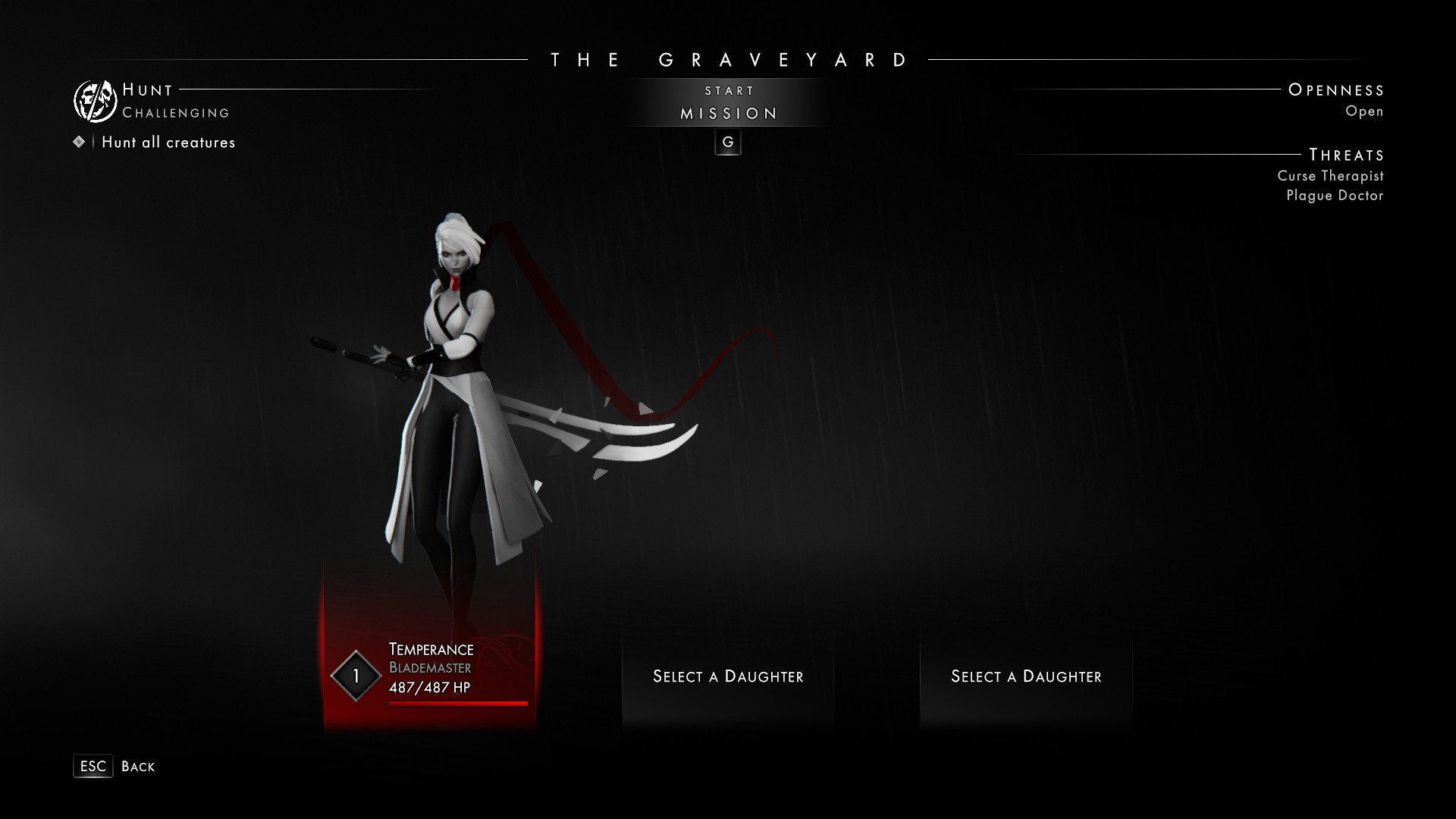
CONCLUSION
Othercide has an intriguing backstory, haunting atmosphere, and beautiful visuals. While designed to help you improve with every failure, combat lacked the level of intensity I prefer. With a lot of grinding, it can be rewarding for those patient enough to play through a very repetitive process. For players who like the idea of controlling an army of badass females equipped with massive swords and oversized revolvers, the game offers you the potential to brutally bash and blast while having the favor returned to you many times over. If eldritch-esque entities of horrific proportions are your thing, then this game may be just for you.
Othercide is rated M for violence, blood, partial nudity, and suggestive themes. The overall tone is nihilistic and there are depictions of demons, so younger audiences may find this game too frightening.
Regarding accessibility, colorblind modes are available, as are subtitles for voice lines which can be resized as needed. The gameplay also provides ample visual indicators throughout.
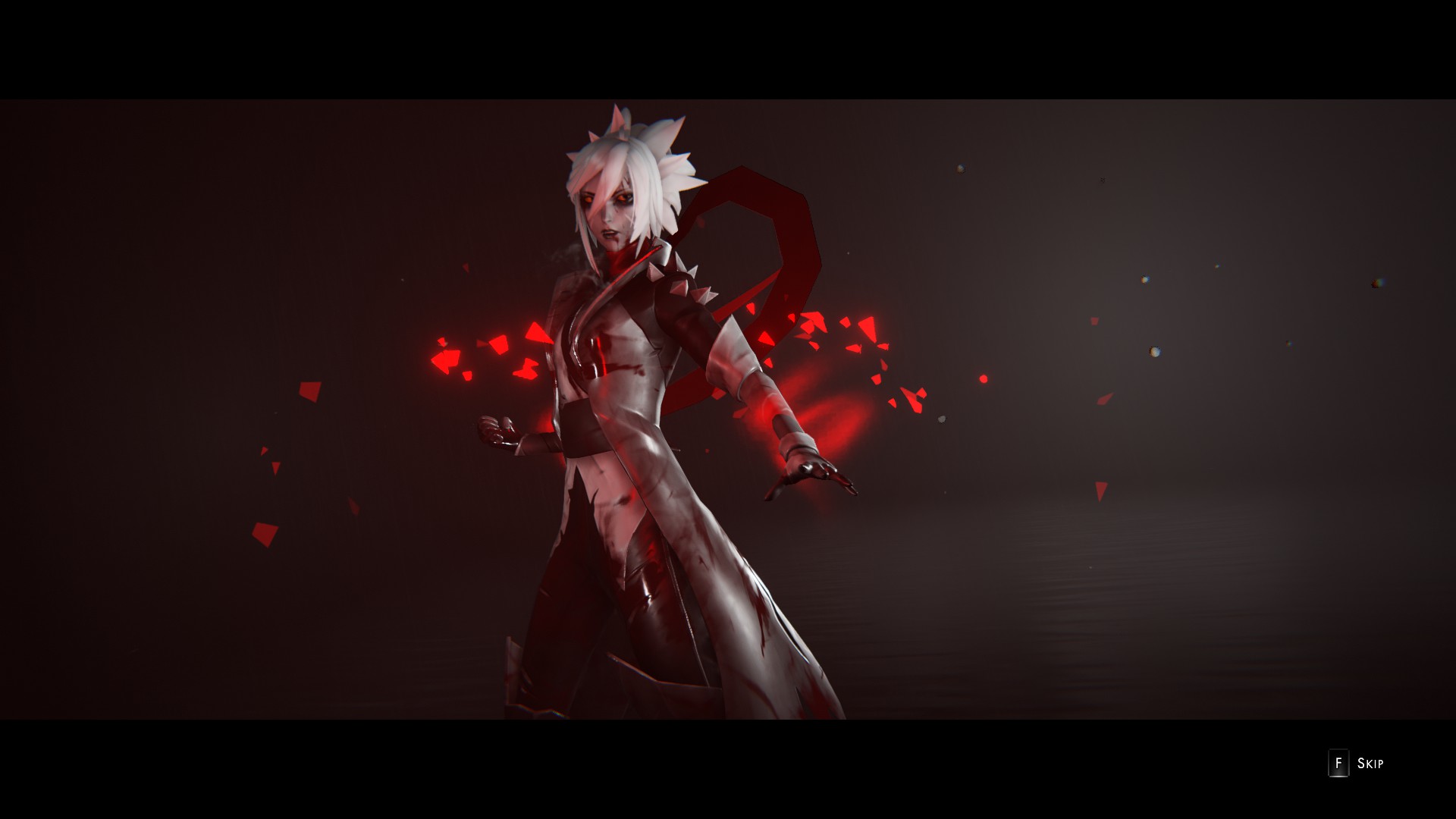
PROS
An immersive codex detailing the NPCs
Interesting concepts and ideas behind the game
Gorgeous visuals
CONS
Repetitive on multiple points
A lot of grinding
Unbalanced to the point of being unenjoyable
Several cut scenes and quotes, to the point of growing stale and uninteresting
Needs a photosensitivity warning for the lightning and flashing effects


